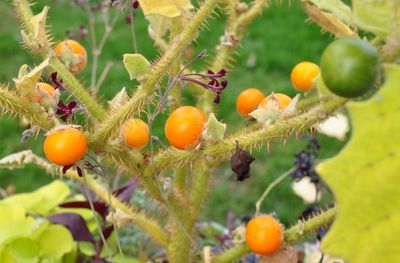Is My Naranjilla Sick?
Naranjilla is a pretty tough plant that will thrive in most situations, as long as you provide the right conditions. However, it can also be susceptible to a few diseases that can stunt growth and even kill your shrubs or reduce your fruit harvest. Here are some of the indications you may have sick naranjilla trees and what may be causing symptoms: Root knot nematode. The most common disease of naranjilla is infection by root knot nematodes, microscopic worms that survive in the soil. Signs of this disease include yellowing of leaves, stunted growth of the plant, and fruit that forms poorly or is small. Vascular wilt. This disease is particularly prevalent where naranjilla is cultivated in South America. The characteristic signs of vascular wilt, which is caused by Fusarium fungi, are yellowing of the leaves and wilting or limp stems and leaves. Over time, the leaves will fall off and you will see discoloration in the vascular system of the plant. Bacterial wilt. A bacterial infection can also cause wilt. The plants will die back and leaves will curl or curve in on themselves. Root rot. Naranjilla needs regular watering, but overwatering or standing water can lead to root rot. You’ll see stunted growth, leaf loss, and brown or dark, mushy and rotting roots.
Preventing and Treating Naranjilla Diseases
It’s best to prevent naranjilla disease problems if possible, which involves providing the right conditions for soil, sunlight, temperature, and watering. Very important for naranjilla is to avoid overwatering and to be sure soil will drain well and not lead to any standing water. Since root knot nematode is the most common disease affecting naranjilla, it may be worthwhile to have your soil tested and treated for this pest before planting. Treating the soil will reduce the risk of the disease but may not entirely eliminate nematodes. If you are growing naranjilla mostly to harvest the fruit, practice crop rotation to avoid developing strong nematode populations in the soil in one area. There may also be root knot nematode-resistant varieties available. Look for these, which are usually grafted naranjilla, before you select a plant or plants to put in your yard or garden. They may be hard to find though. To prevent or treat fungal infections like vascular wilt or root rot, treating the soil with fungicides before planting may be of some help. Treating affected plants with fungicides may only be of limited help. In the future, it will likely be resistant varieties that will be most important in preventing these diseases, but right now most are still in the research stage.
